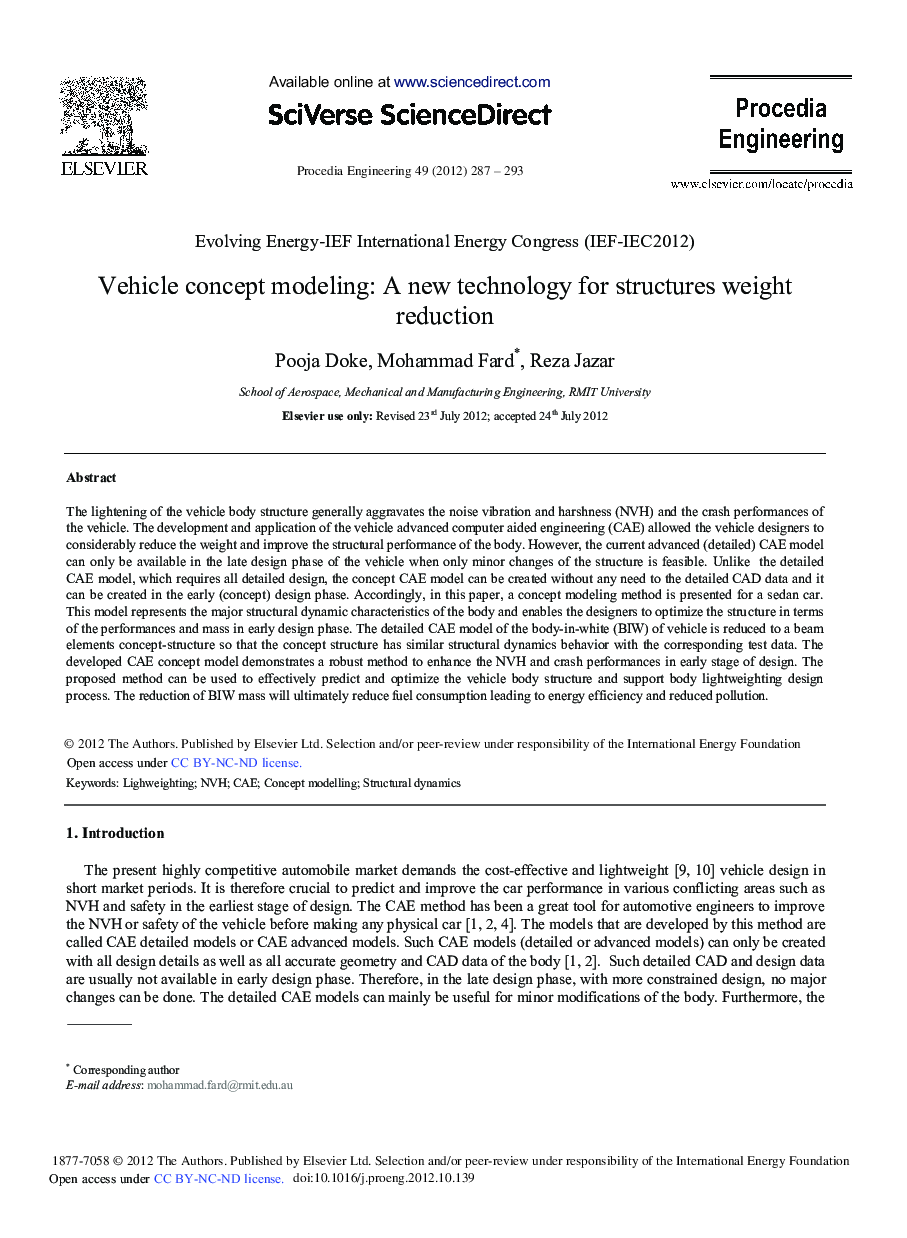| کد مقاله | کد نشریه | سال انتشار | مقاله انگلیسی | نسخه تمام متن |
|---|---|---|---|---|
| 860583 | 1470777 | 2012 | 7 صفحه PDF | دانلود رایگان |

The lightening of the vehicle body structure generally aggravates the noise vibration and harshness (NVH) and the crash performances of the vehicle. The development and application of the vehicle advanced computer aided engineering (CAE) allowed the vehicle designers to considerably reduce the weight and improve the structural performance of the body. However, the current advanced (detailed) CAE model can only be available in the late design phase of the vehicle when only minor changes of the structure is feasible. Unlike the detailed CAE model, which requires all detailed design, the concept CAE model can be created without any need to the detailed CAD data and it can be created in the early (concept) design phase. Accordingly, in this paper, a concept modeling method is presented for a sedan car. This model represents the major structural dynamic characteristics of the body and enables the designers to optimize the structure in terms of the performances and mass in early design phase. The detailed CAE model of the body-in-white (BIW) of vehicle is reduced to a beam elements concept-structure so that the concept structure has similar structural dynamics behavior with the corresponding test data. The developed CAE concept model demonstrates a robust method to enhance the NVH and crash performances in early stage of design. The proposed method can be used to effectively predict and optimize the vehicle body structure and support body lightweighting design process. The reduction of BIW mass will ultimately reduce fuel consumption leading to energy efficiency and reduced pollution.
Journal: Procedia Engineering - Volume 49, 2012, Pages 287-293